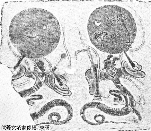 |
< A rubbing an Eastern Han Dynasty brick, showing
the two mythical creators of the world, Fuxi 伏羲 and his
sister Nüwa 女媧. They have a snake shaped body and hold
geometrical instruments in their hands. Upon their heads
we see the sun and the moon. |
 |
< Another picture that shows mythical tradition is
this rubbing of a brick from the Eastern Han Dynasty.
These two birds with a man's head symbolize the moon and
the sun. On the moon lives a toad, on the sun a crow. |
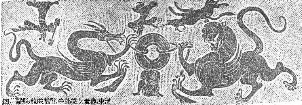 < Dragons and
lions had already developed during the Warring States
period 戰國. During the Han Dynasty they became a very popular
motif. These two examples are playing with a jade disk bi 璧, a symbol of heavenly contact with
the owner of the disk. < Dragons and
lions had already developed during the Warring States
period 戰國. During the Han Dynasty they became a very popular
motif. These two examples are playing with a jade disk bi 璧, a symbol of heavenly contact with
the owner of the disk. |
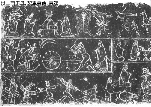 |
< This rubbing of an Eastern Han Dynasty stone has
a special religious background. Especially during the Han
dynasty, the veneration of the so-called Mother Queen of
the West (Xi wang mu 西王母)
was very popular among many social groups, peasantry as
well as upper class. In this picture, we see the mythical
animals toad, crow and hare and people making chariot
wheels. |
 |
< A red coulored rubbing of an Eastern Han stone
showing a Lord on an excursion, accompanied by his
servants. The rubbing scholar has added a poem. |
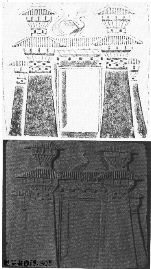 |
< Even the architecture of the Han Dynasty can be
reconstructed because a brick and its rubbing of a city
gate have survived. The gate is flanked by two mighty
towers with watching platforms at its top. On the roof of
the gate we see a phoenix, a symbol of happiness, luck
and longevity. We also find models of towers, palaces and
farms in the tombs of the Han nobility that are scattered
all over China. |
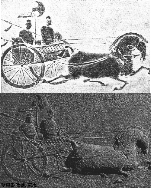 |
< An item that is found in tombs and can be seen
in pictorial art, is the one horse chariot of the Han
dynasty. It was used by an aristocrate and the chariot
leader. A halfmoon shaped axes indicates the rank of the
owner of this chariot. Brick and rubbing are both
conserved. |
 |
< We see not only the life of the nobility but
also the daily work the peasants had to do. This rubbing
of an Eastern Han brick shows two men shooting ducks and
harvesting peasants. |
 |
< As a source of Han social history, this picture
of a store can be used as an ideal illustrative material.
The trader sells sheep and a kind of wine. |
 |
< A further example of a picture that shows a scene
in daily life is this rubbing of an Eastern Han brick,
demonstrating the work in a butcher's shop, where we see
meet being chopped, hanged up, dryed and boiled. |
|
|
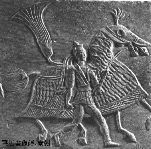 |
The period of the Southern and Northern Dynasties 南北朝 was dominated by warriors of Chinese and Non-Chinese origin. This brick shows a cavarly soldier with his hearvily armoured horse. |
 |
Southern Dynasties court ladies. On this brick we can admire the costumes, hair fashion and the large shoes of the 5th century dames à la mode. |